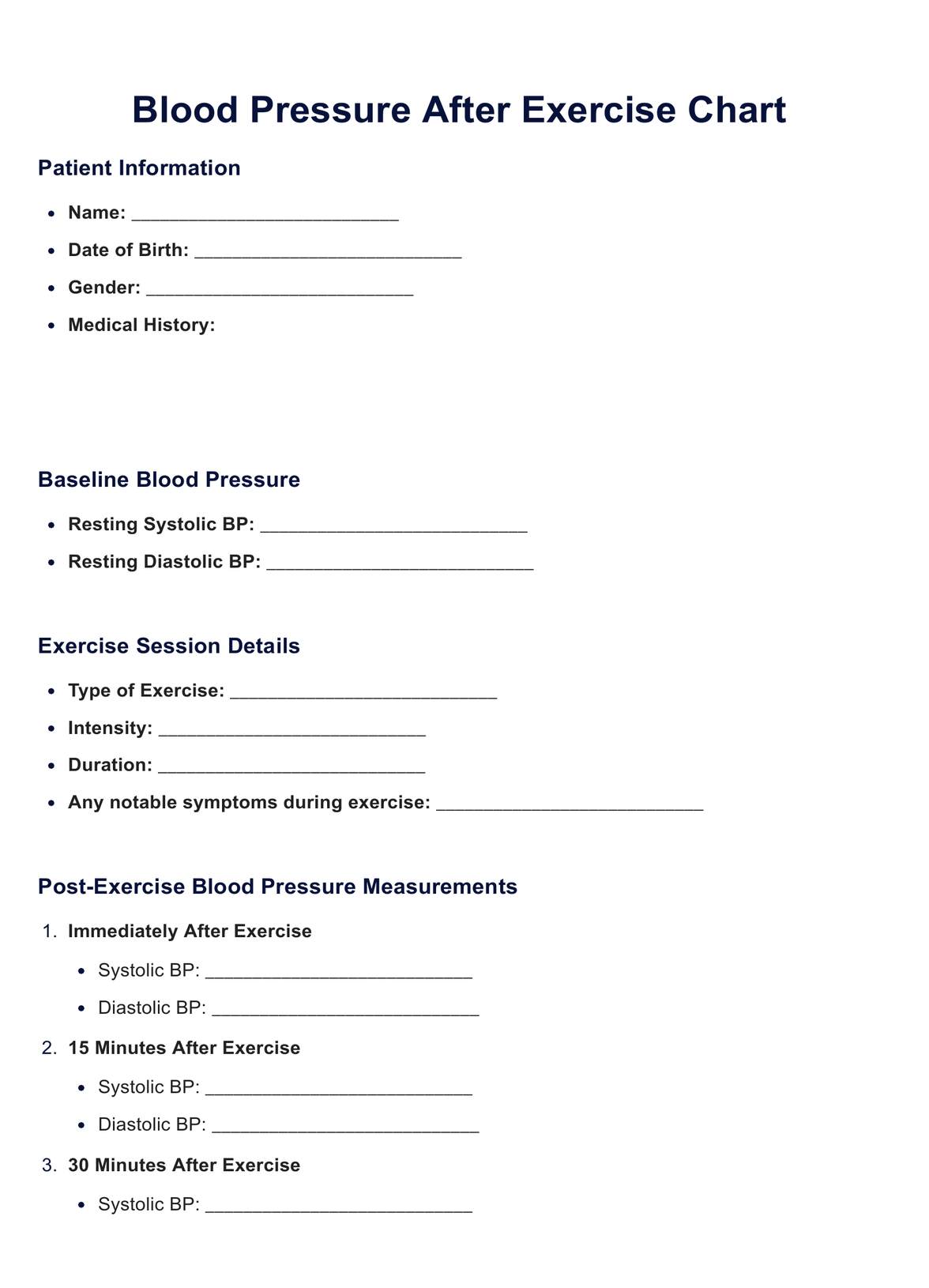Individuals monitoring their cardiovascular health, fitness professionals guiding clients, and healthcare providers managing patients with hypertension or cardiovascular concerns commonly request a Blood Pressure After Exercise Chart.

Blood Pressure After Exercise Chart
Track your post-exercise responses, manage hypertension effectively, and optimize cardiovascular health with our Blood Pressure After Exercise Chart.
Blood Pressure After Exercise Chart Template
Commonly asked questions
Blood Pressure After Exercise Charts are used after physical activity sessions to monitor and analyze immediate and short-term blood pressure responses. They provide insights into the impact of exercise on cardiovascular health.
Users record baseline blood pressure, details of the exercise session, and post-exercise measurements at specified time intervals. The chart is a visual tool to observe blood pressure patterns, variations, and trends, aiding in fitness optimization and health assessment.
EHR and practice management software
Get started for free
*No credit card required
Free
$0/usd
Unlimited clients
Telehealth
1GB of storage
Client portal text
Automated billing and online payments











